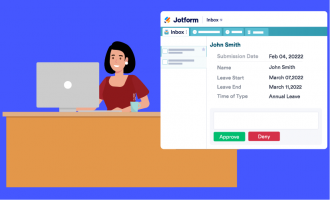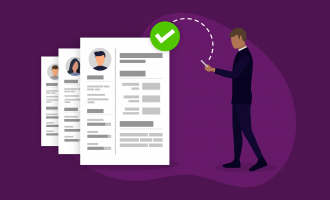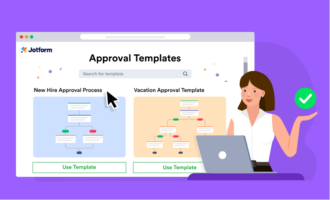Effective human resource management requires a lot of administrative and strategic tasks. These tasks can be time-consuming and cumbersome if your human resource management team does them manually, taking them away from pressing initiatives. A manual approach can also result in inaccurate data entry or missed workflows.
To improve HR productivity and accuracy, it’s best to use a software solution to automate certain tasks. But should you choose a human resource management system (HRMS) or a human resource information system (HRIS)?
Let’s learn the differences between HRMS vs HRIS so you can choose the one that’s best for your business needs and helps achieve your human resource management goals.
Check it out…
Streamline administrative tasks with Jotform’s powerful online forms and automation tools.
What is an HRMS?
A human resource management system (HRMS) is a technology solution that makes certain HR functions easier, faster, and more reliable. HRMS platforms typically focus on a comprehensive suite of features, which can include
- Payroll processes
- Taxes and compliance
- Employee onboarding
- Training and professional development
- Time and attendance tracking
- Performance evaluation and reviews
- Benefits administration
- Employee self-service functions
- Scheduling
- Workforce forecasting
Not all HRMS platforms include all of this functionality. Most typically focus on a specific area and have add-ons that businesses can use to expand the functionality.
For example, an HRMS may have a robust payroll suite and add-on features for time tracking and scheduling. Many HRMS platforms also integrate with additional software — such as accounting or bookkeeping applications — to provide more flexibility for businesses.
What is an HRIS?
A human resource information system (HRIS), is a subset of human resource management systems. Often, you’ll find people using the terms HRIS and HRMS interchangeably, but it’s important to take note of key differences. An HRIS deals only with quantitative data, while an HRMS deals with both quantitative and qualitative data.
HRIS technology typically focuses on payroll, time tracking, attendance tracking, accounting and bookkeeping functions, workflow automation, and benefits administration. It doesn’t include other elements found in an HRMS, such as performance evaluations or onboarding and training.
HRIS platforms often include a basic employee self-service function that provides workers with access to important policies and workplace handbooks. They sometimes also have functionality that lets employees view and change personal data, such as their address and other contact information.
What about HCM when you’re comparing HRMS vs HRIS?
When comparing HRMS vs HRIS, remember to consider a third possibility: human capital management (HCM) systems. People also use the terms human capital management and human resource management interchangeably. Some experts believe HCM is the more comprehensive option, while others feel HRMS is the overarching solution.
Regardless, it’s important to understand that HCM systems focus on functionality that helps businesses realize more economic value from their employees. This includes onboarding, training and professional development, and performance evaluations.
HCM features also typically have robust analytics functionality for key metrics like employee engagement, performance, turnover, cost-per-hire, and more. Typically, HCM systems offer employees extensive self-serve access to knowledge bases, guides, policies, business data, and other company documentation.
HRMS vs HRIS vs HCM: Which should you choose?
There’s no right answer when it comes to which is the best human resource management technology, because it all depends on an organization’s needs.
Keep in mind that people often conflate or misuse these terms — HRMS vs HRIS vs HCM — so software that’s actually an HRIS may call itself an HRMS. Instead of looking at the labels, focus on reviewing each software’s features and functionality to decide if it can help your business automate its most critical HR tasks.
Be sure to compare integrations for each type of software as well. Many organizations have multiple systems for accounting and bookkeeping or internal communication and instant messaging. Choosing a human resource management system that integrates with existing systems further streamlines HR processes and improves productivity across departments.













































Send Comment:
1 Comments:
More than a year ago
It is a really good blog. It helps to understand the difference between HRMS and HRIS. I liked it and enjoyed reading it. Keep sharing such important posts.